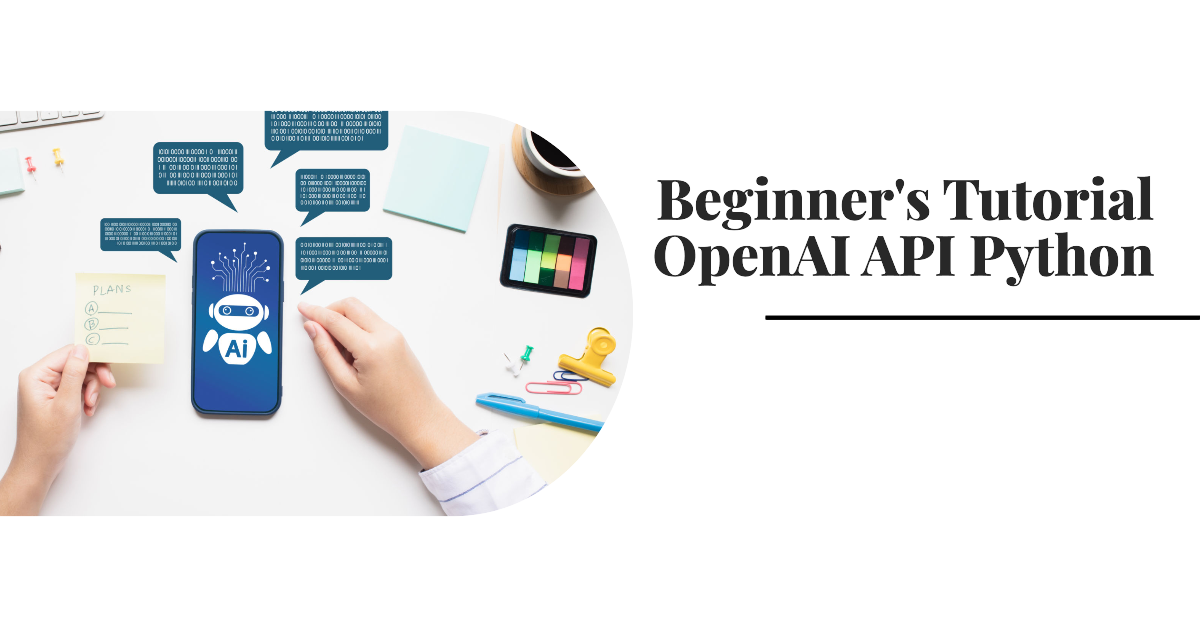In this tutorial, you will learn all the tricks of the trade for working with the OpenAI API in Python. After this article, a world will open up for you, and you’ll be able to start your own AI projects! Don’t worry, we’ll explain step by step how to get access and how to get started with a few simple, quick steps. After reading this article, you’ll be ready to get started with the GPT-4o or o1 models even explore audio models like Whisper. In other words, we’ll show you all the benefits of the API for content generation, translation, and code creation, simply put everything you need to build your own customized AI tool. Exciting, right? Let’s start with the basics so you can immediately begin making your first API request in Python by calling the GPT-4o model.
If R is your preferred language, then check out this article: HERE.
Requirements:
To get started the following installations are required, don’t worry our colleagues will help you through all the steps.
- Python is installed on your computer. Check out this article from Tilburg Science Hub for a tutorial on this.
- An IDE, such as VSCode, is installed on your computer. Again, look at this tutorial from Tilburg Science Hub.
Setting up your environment
- Create or Log Into Your OpenAI Account:
- Visit OpenAI’s API documentation website and either sign in with an existing account or create a new one. This step is crucial as it grants you access to the API keys required for authentication.
- Generate an API Key:
- Navigate to the API keys section within your OpenAI account dashboard.
- Create a new API key. Remember to copy this key immediately, as it won’t be visible again once you navigate away from the page.
- Secure Your API Key Using Environmental Variables:
MacOS
- Open your terminal or command prompt.
- Run the command
nano ~/.zshrcto open your bash profile in the nano editor. (Note: for older MacOS versions, you might need to run nano~/.bash_profileinstead). - You can edit the file by pressing control + O and then enter.
- Add the line
export OPENAI_API_KEY='your-api-key'at the end of the file, replacingyour-api-keywith the actual key you obtained earlier. - Save the file by pressing
Ctrl + X,yand then hitEnter. - Apply the changes by running
source ~/.zshrcor restart your terminal.
Windows
- Right-click on ‘This PC’ or ‘My Computer’ on your desktop or in File Explorer, and select ‘Properties’.
- Click on ‘Advanced system settings’ on the left side of the System window.
- In the System Properties window, click the ‘Environment Variables’ button near the bottom of the Advanced tab.
- In the Environment Variables window, under the ‘System variables’ section, click ‘New…’ to create a new system variable.
- In the New System Variable dialog, enter
OPENAI_API_KEYas the variable name and your actual API key as the variable value. - Click ‘OK’ to close the New System Variable dialog. Then, click ‘OK’ again to close the Environment Variables window, and click ‘OK’ once more to close the System Properties window.
4. Verifying Your API Key:
- In the terminal, run
echo $OPENAI_API_KEYwhen using a Mac, andecho %OPENAI_API_KEY%when using Windows. - This command should return your API key, confirming it has been correctly set up as an environmental variable.
Integrating OpenAI API with Python
- Install the OpenAI Python library
install the OpenAI Python package. You can do so by runningpip install --upgrade openaiin your terminal. - Import Required Packages
Start by opening your IDE and creating a new Python file. At the top of the file, import the necessary packages for interacting with the OpenAI API:
from openai import OpenAI
import os- Initialize the OpenAI Client:
Use the following code snippet to initialize the OpenAI client with your API key:
client = OpenAI(api_key=os.environ.get("OPENAI_API_KEY"))- Generate Text with the OpenAI API
You can now generate text completions by calling theclient.chat.completions.create()function. This function specifies the model (gpt-3.5-turboin this case) and simulates a conversation between a user and the assistant. Here’s what’s happening inside thecreate()method:model="gpt-4o-mini": Specifies the model to use for the text generation. In this case, “gpt-4o-mini” is chosen. For more alternative models you can check this overview.messages: This is a list of messages that simulate a conversation between a user and the assistant. Each message is a dictionary with two keys: role and content. The role can be either “system”, “user”, or “assistant”, indicating the sender of the message.
Here’s a basic example:
completion = client.chat.completions.create(
model="gpt-4o-mini",
messages=[
{"role": "user", "content": "Tell a good joke in the form of a question. Do not yet give the answer."}
]
)- Display the Generated Text:
To view the text generated by the API, print the content of the message:
print(completion.choices[0].message.content)Here is the full Python code to be able to copy it all at once:
from openai import OpenAI # Import the OpenAI package
import os # Import the os package
client = OpenAI(api_key=os.environ.get("OPENAI_API_KEY"))
completion = client.chat.completions.create(
model="gpt-4o-mini",
messages=[
{"role": "user", "content": "tell a good joke in the form of a question. Do not yet give the answer."}
]
)
print(completion.choices[0].message.content)Conclusion
In short, in this tutorial we went through all the steps necessary to get access to the OpenAI API and did our first use case! You even used the GPT-4o-mini model. So feel free to get started and use our examples and code as a starting point




